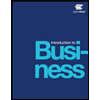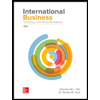Univ VIII Project CSU
.docx
keyboard_arrow_up
School
Columbia Southern University *
*We aren’t endorsed by this school
Course
6053
Subject
Business
Date
Jan 9, 2024
Type
docx
Pages
13
Uploaded by nikitawallacecsu on coursehero.com
Running head: Case Analysis of Uber
1
Unit VIII Journal
MBA 6053 Economics for Managers
Jamel Latrell Xavier III
Professor James Halstead
September 22, 2020
Running head: Case Analysis of Uber
2
Table of Contents
Introduction
................................................................................................................................
3
Market Before Uber and its Exploited Inefficiency
...................................................................
3
Uber’s Surge Pricing and Shifts in Supply and Demand
...........................................................
5
Uber’s Surge Pricing and Price Discrimination
.........................................................................
6
Uber Business Model and Economic Concepts
.........................................................................
7
Economies of Scale
....................................................................................................................
7
Economies of Scope
...................................................................................................................
8
Game Theory to Uber’s Market
.................................................................................................
8
Uber’s Potential for International Expansion and Potential Trade Policy Issues
......................
9
Incentive Pay Model of Uber and its Influence on Principal-Agent Issue
.................................
9
Asymmetric Information Complexity with Uber’s Business Model
.......................................
10
Conclusion
................................................................................................................................
10
References
................................................................................................................................
12
Running head: Case Analysis of Uber
3
Case Analysis of Uber Introduction
Advanced innovation creates a massive disruption in various sectors by transforming traditional processes into contemporary ones to attain sustainability and profit maximization in the competition. Further, globalization and Industry 4.0 are the other factors that increase the demand for innovative business practices to avail excessive opportunities for the global business environment (Cramer & Krueger, 2016). By overviewing the importance of disruptive technology, Uber executes GPS technology in the ride-sharing business fthat completely advances the transportation industry. Because of the particular change in the industry, Uber intensely contends with the local juggernauts in transportation while obtaining
success while offering ad hoc opportunities to millions of drivers all over the globe (Dudley, Banister & Schwanen, 2017). The following practices are used by Uber as part of their business model, price surge, price discrimination, game theory, trade expansion, economies of scale, incentive pay model and economies of scope models in the business (Cramer & Krueger, 2016). Uber’s questionable credibility in the transportation sector will continue to be in question. The following information and research expounds the essential concepts of economics for understanding the role of Ubers processes and its organizational performance.
Market before Uber and its Exploited Inefficiency
Uber’s path of ruin, began during the inception of their business while losing gross profits during the first nine years of the company’s initial inception. While other corporation’s utilized traditional methods and business practices. Uber investors never expected their returns would come from industry utilizes traditional business practices, which
is less reliable for customers because of no convenience and accessibility of taxis on the fingertip. However, Uber pursued a growth at all costs strategy financed by a stunning $20
Running head: Case Analysis of Uber
4
billion in funding by its investors. When introducing the concept of shared-economy that delivers substantial value to riders and consumers it was found to be appealing to the masses. Uber’s massive subsides were unequivocally anticompetitive and unsustainable- but they made the company enormously popular as mentioned when passengers enjoyed not having to pay the full cost of their service. Majority of the criticism concerning Uber was focused on the narrow behavioural and cultural issues, including deceptive advertising and pricing, algorithmic manipulation, driver exploitation, deep-seated misogyny among executive’s, and disregard of laws and business norms ("Uber’s path of destruction," 2019).
Uber’s long game planned to eradicate all definitive completion and then profit from its innovation by way of power in numbers. Uber, in a short amount of time had become internet and social media famous, not achieving Facebook and or Amazon powered platforms yet very close. Like so many start-up companies Uber’s investors agreed to go public with the company, in hopes of exploiting the masses of gullible investors in order to generate enough revenue with its current popularity based of the popularity efficient innovations attracting investors who do
not care about the inability to generate profits. Eventually, false narratives created the beliefs that Uber’s corporate value was sound and reasonable making it attractive to the tech world, media and investment groups. And out of thin air the belief’s surrounding Uber lead to it being considered the most valuable transportation company on the planet and the second most valuable start-up IPO in U.S. history only to Facebook ("Uber’s path of destruction," 2019)
. The narrative created by Uber was simply its way of bending public perception on how new and massive company could create a false narrative types of manufactured employment. This was probably the largest representation of their strength, meaning the false and constructive narrative. Yet in reality, Uber’s platform wasn’t a ground-breaking technologically advanced
Running head: Case Analysis of Uber
5
breakthrough, nor has Uber unsettled the traditional urban car services. The respective business model exploits riders with moving targets to maintain the supply of Uber drivers, which is considered as the coercive tactic to manipulate riders with psychological tricks.
Uber exploited the idea that competitive consumer and capital markets will maximize overall economic welfare by rewarding companies with superior efficiency. Like so many other companies with multibillion dollar subsidies, Uber completely distorted marketplace price and service signals, leading to a massive misallocation of resources. Uber never created wealth for the consumer, workers, it’s cites being serviced or anyone else outside of its own private wealth and financial growth. Uber’s, proposed agenda was to exploit the offerings of work flexibility, autonomy, command and free enterprise while enjoying producing your own uncapped income. The other factors that contribute to utilizing inefficient practices include the use of drive-
passenger association system, promotion of the labour-supply model in the transport sector, inefficient taxi regulations and improved market share for Uber (Cramer & Krueger, 2016). Because of the inefficiency in taxi regulations no power is given to the riders to take advantage of the available information and choose the rides accordingly, which can lead towards misleading practice due to limited control over drivers (Dudley, Banister & Schwanen, 2017). This opened the door for Uber to change the transportation sector with innovation and exploiting inefficient regulations that need to be resolved to deliver unusual services for customers as well.
Uber’s Surge Pricing and Shifts in Supply and Demand
Economists like to use Uber as the embodiment of a functioning supply-and-demand economy. When David Sacks the CEO and founder of Yammer tweeted a sketch of Uber’s network effect. He put simply and elegantly, network effect is the phenomenon in which a
Your preview ends here
Eager to read complete document? Join bartleby learn and gain access to the full version
- Access to all documents
- Unlimited textbook solutions
- 24/7 expert homework help
Related Questions
m-Onli...
10
Booking.com
Marketing Research Assessment i
Mc
Graw
Hill
McAfee Security
Multiple Choice
Amazon.com - Onli...
Mathematical modeling, in which equations are used to model the relationships between variables, is a technique used in
qualitative research.
experimental research.
causal research.
descriptive research.
Content G Image result for cur...
exploratory research.
MI
Saved
< Prev
10 of 10
Next
arrow_forward
m.com-Onli... Booking.com McAfee Security a Amazon.com - Onli...
ny
Marketing Research Assessment i
9
Mc
Graw
Hill
Multiple Choice
The marketing research industry relies on ethical standards to help gain the trust of consumers. Establishing trust
increases individuals' willingness to participate in research.
ensures accurate research results.
Content G Image result for cur...
informs companies when to cease research.
decreases the cost of research.
increases the cost of research.
13
Q
Saved
6252Fmghmiddl...
arrow_forward
estion 6
Which of the following is not true regarding e-commerce today?
E yet
wered
ked out of
Select one:
a. Consumers are less price-sensitive than expected.
Flag question
b. The market middlemen disappeared.
c. There remains considerable persistent price dispersion.
d. Economists' visions of a friction-free market have not been realized.
arrow_forward
1. Mention the main competitors of Apple.
arrow_forward
1. Identity five elements that are important in assessing and comparing the attractiveness of alternative business opportunities in terms of their market potential.. 2. identify three elements that are important in assessing and comparing the attractiveness of 'alternative business opportunities in terms of their financial viability. 3. Identify seven elements that are important in assessing and comparing the attractiveness of alternative business opportunities in terms of competitive advantage and entrepreneurs' resources. 4. Identify five elements of the 7Ps of marketing.
arrow_forward
Complete with the Definitions
. …………...help address strategic issues and long-term trends, both in firm and in externalenvironment
arrow_forward
Editing
A A B IU A .
Ev E E EE A
V 11
...
Question 3
Milani is an international skin care company behind the leading brands Jergens, Palmers, Eucerin, and
Neutrogena. Over the past five (5) years the company has grown rapidly in the United States by
developing a balanced and well managed portfolio of brands. The Milani range includes product types
ranging from female face and body products to men's shaving gels, through to deodorants and sun care
products. Segmentation has been vital to the success of Milani and allowed the brand portfolio to grow
to over forty (40) products, all meeting clear consumer needs.
A. Explain THREE (3) requirements that Milani would need to keep in mind when deciding to effectively
segment the market
B. Discuss TWO (2) market segmentation bases that Milani would need for segmenting their consumer
markets.
C. Tracks and Records, a popular local restaurant, has decided to expand their operations internationally
in the United States and Canada. Examine ONE (1)…
arrow_forward
Required:
b) Discuss the likely outcome of Prity’s defamation claim against Newspaper?
Use IRAC method
Note: IRAC stands for:
I -issue simply identify the issues , r -rule , a -applications, c- comclusion, likely outcome of Prity’s defamation claim against Newspaper.
Please this time answer this questions, I am struggling, please help me. I need help from expert.
arrow_forward
cation: M X
https://f2.app.edmentum.com/assessments-delivery/ua/mt/launch/49004883/45255951/a
Firm Ownership and Taxation: Mastery Test
4
Select the correct answer.
Which was the first antitrust legislation passed by Congress, in 1890?
O A.
Trade Act
O B.
Product liability
Sherman Act
O D.
Labor Act
Reset
Next
rights reserved.
o search
99+
II
arrow_forward
12
An e-government platform that solely offers information as part of their business model refers to a hybrid business model.
Select one:
a. True
b. False
arrow_forward
Mustafa Computer Supplies LLC is
selling computer accessories for
wholesale and retail business. Which
of the following is False Statement?
а.
Mustafa Computer Supplies LLC is a
merchandise business
b.
Mustafa Computer Supplies LLC is
doing a retail business
С.
000
Mustafa Computer Supplies LLC is a
doing a manufacturing business
d.
Mustafa Computer Supplies LLC is
doing a wholesale business
10:10 am
arrow_forward
Could you please give detailed answer and do not copy-paste because I would check on plagiarism
Q1: A company asked for your help and wants to know what it can do to achieve competitive advantage and how it can sustain it. What advice would you give to this company given your knlowledge about business strategy.
arrow_forward
41. The
Sarbanes-Oxley Act of 2002 is an example of a change in the __________
environment which forced thousands of publicly traded companies to adjust the
way they conduct business.
a.
political-legal
b.
technological
c.
task
d.
operating
e.
socio-cultural
42. Interaction
of the factors of rivalry among competitors, bargaining power of customers, the
threat of substitute products or services, bargaining power of suppliers, and
threat of new entrants to the industry can be assessed through a tool known as
the __________.
a.
Five Forces Model
b.
Internal-External Model
c.
Bargaining Model
d.
Competitive Advantage Model
e.
Interaction Assessment Model
43. Using
the Five Forces Model, the movie theatre industry would consider Blockbuster as
a
a.
supplier.
b.
substitutes competitor.
c.
direct competitor.
d.
new entrant.
e.
differentiated competitor.
44. The
purpose of __________ is to identify assets, resources, skills, and processes
that represent either strengths or weaknesses of the…
arrow_forward
Table of contents with sub topics and pagenumbers2· Introduction: · Introduce your topic. This includesidentifying the problem and defining any keyterms. 5· Analysis criteria: · Establish the criteria with which you willevaluate the existing policy and policyalternatives. For example, cost, legality,efficiency and political acceptabilityrepresent possible evaluative criteria. 10· Literature Review · Summarize the existing literature thataddresses the policy issue, including onlineand print publications.15· Policy Analysis · Critical Analysis of the National WasteManagement Strategy (NWMS): Analyse thepolicy according to the evaluative criteria.This analysis should also include the effectsthe policy has on different groups and anyconflicts it creates among important values.25· Policy alternatives · Identify alternatives: Discuss theadvantages and disadvantages of eachoption. Keep in mind that you can combinealternative options into new ideas.25· Conclusion and recommendations: ·…
arrow_forward
Analyze the abstracts from the perspectives of the following: a) background, b) topic, c) approach, d) conclusion, e) significance", and also analyze the title and have your opinion about it whether it's right as per the paper or if you think you can write a better title for that paper for their features and reasoning. The first title is third-party logistics providers (3PLSP) Bibliometric analysis; outsourcing
Third-party logistics (3PL) service providers are crucial to achieving sustainability in supply chain management (SCM). Third-party logistics service providers (3PLSP) are identified in such a way that they can help a firm fulfill its targeted objectives. The choice of 3PLSP must take into account broad selection criteria that are pertinent to both current and future needs. Various modeling techniques have been applied to evaluate and select 3PLSP. For the evaluation and selection of 3PLSP in the given set of situational requirements, a set of different selection criteria has…
arrow_forward
perations Management Spring21
Tim
estion
Manufacturing cell permits the manufacturing of a wide-range of very different products
O a.
TRUE
et
ered
O b. FALSE
ed out of
lag
tion
NEX
PREVIOUS PAGE
arrow_forward
_______ CAFTA, NAFTA, OECD, and OPEC are allexamples ofa. political organizations.b. peace treaties.c. international economic communities.d. World Trade Organization members.e. democratic organizations.
arrow_forward
Can I have some help with this please
The taxicab drivers' union is threatened by the introduction of self-driving vehicles. Threat of new entrants, Power of suppliers,Threat of substitutes, Rivalry of existing competitors, Power of buyers.
In which of these industries would buyers enjoy relatively high power? [Select all that apply]
Aluminum can manufacturers when dealing with beverage industry buyers, air transportation between Boston and New York City, steel, Electrical power generation (household buyers).
arrow_forward
Sub: inter. marketing Please Answer (previous time just only explanation) But no need to explanation ... should provide the strategy.. like the company website, they provide which product, the price with product, and how to sell.....
Basically, our group chose one product which is made from palm oil from Malaysia. we will process and package them and sell them to the German market. so our products are all kinds of edible oils. we are not limited to one packaged oil. This can be played freely by referring to the existing edible oil in the Malaysian market. So remember from
Malaysia we will sell edible oil in the German market.
So my question would be
Describe your marketing (product, pricing, placement & promotion) strategies, bearing in mind that they must support & reinforce your chosen positioning strategy.
Present your breakeven analysis (chart) to enable comparison of your breakeven quantity with the size of your selected target market & expected market
Thanks in…
arrow_forward
Exercise 2.1
Use a separate sheet of paper for your answer/s.
1. Describe the elements of a company's marketing
environment and discuss why marketers play a critical role in
tracking environmental trends and spotting opportunities.
2. List some of the demographic trends of interest to marketers
in the Philippines and discuss whether these trends pose
opportunities or threats for marketers.
3. Discuss current trends in the natural and economic
environment that marketers must be aware of and provide
examples of company responses to each trend.
23
arrow_forward
1.You are aware about the challenges of Facebook, so you are preparing to compete with them in the advertising segment
●
2.The price per day of a single brand promoting in Facebook is $.4.
●
3.Finance tells you must have $700 per year in terms of yields to recover the investments and your product will be charge for $0.05 per hour in terms of labor costs
●
4.Market research tells you that your customers are willing to pay $30 per month more vs. the actual alternative for a better solution in terms of noise in the market
●
5.You assume you will get 10% of market price due your differences
●
6.What will be the price of your brand? Is this price competitive? and if not, what could you do?
arrow_forward
Ethics Review the AMA Code of Ethical Norms and
Values for Marketers, available on the AMA website,
https://www.ama.org/AboutAMA/Pages/Statement
arrow_forward
Which ones of the following statements about credit rating agencies in China are correct?
Select one or more:
O a.
The credit rating agencies need approval from different regulators to rate different types of bonds.
O b. There are several credit rating agencies in China.
Domestic credit rating agencies tend to give higher ratings than credit rating agencies with global partners.
O d. Almost all public bonds have only one credit rating.
O e. Credit rating agencies cannot rate bonds without bond issuer's solicitation.
arrow_forward
Strongly Disagree
Disagree
Agree
Strongly Agree
Question
7. Information technology allows for tracking the delivery of a product.
9. As long as a company offers a product or service at a low price, it will sell more than competitors do.
10. I think suppliers must be able to respond quickly to inventory needs.
11. I think decreasing the time to complete a process and reducing costs result in decreased customer satisfaction.
12. Computerized order processing provides for better information management.
SH
arrow_forward
The following data was gathered during one of the recent audits of Cash Disbursement Section. One of the findings was on the outdated Delegation of Authority to policy. In preparing a report of the findings, identify the elements of an audit findings for each data (in order).
1. The delegation authority is updated biannually and not when changes in personnel or
responsibilities of authorized individuals occur. 2. The delegation of authority policy list three individuals who are no longer with the
company. Additionally, four individuals were identified who are new in their positions that should have disbursement authority, but are not listed in the policy.
3. Disbursements may be made that are not in accordance with management's or BOD's direction.
4. Authority over the disbursement of funds should only be delegated to individuals whose responsibility justify such authority.
O Cause, Effect, Condition, Criteria
O Condition, Effect, Cause, Criteria
O Cause, Condition, Effect,…
arrow_forward
summary on who moved my cheese
arrow_forward
SEE MORE QUESTIONS
Recommended textbooks for you

BUSN 11 Introduction to Business Student Edition
Business
ISBN:9781337407137
Author:Kelly
Publisher:Cengage Learning

Essentials of Business Communication (MindTap Cou...
Business
ISBN:9781337386494
Author:Mary Ellen Guffey, Dana Loewy
Publisher:Cengage Learning

Accounting Information Systems (14th Edition)
Business
ISBN:9780134474021
Author:Marshall B. Romney, Paul J. Steinbart
Publisher:PEARSON


International Business: Competing in the Global M...
Business
ISBN:9781259929441
Author:Charles W. L. Hill Dr, G. Tomas M. Hult
Publisher:McGraw-Hill Education

Related Questions
- m-Onli... 10 Booking.com Marketing Research Assessment i Mc Graw Hill McAfee Security Multiple Choice Amazon.com - Onli... Mathematical modeling, in which equations are used to model the relationships between variables, is a technique used in qualitative research. experimental research. causal research. descriptive research. Content G Image result for cur... exploratory research. MI Saved < Prev 10 of 10 Nextarrow_forwardm.com-Onli... Booking.com McAfee Security a Amazon.com - Onli... ny Marketing Research Assessment i 9 Mc Graw Hill Multiple Choice The marketing research industry relies on ethical standards to help gain the trust of consumers. Establishing trust increases individuals' willingness to participate in research. ensures accurate research results. Content G Image result for cur... informs companies when to cease research. decreases the cost of research. increases the cost of research. 13 Q Saved 6252Fmghmiddl...arrow_forwardestion 6 Which of the following is not true regarding e-commerce today? E yet wered ked out of Select one: a. Consumers are less price-sensitive than expected. Flag question b. The market middlemen disappeared. c. There remains considerable persistent price dispersion. d. Economists' visions of a friction-free market have not been realized.arrow_forward
- 1. Mention the main competitors of Apple.arrow_forward1. Identity five elements that are important in assessing and comparing the attractiveness of alternative business opportunities in terms of their market potential.. 2. identify three elements that are important in assessing and comparing the attractiveness of 'alternative business opportunities in terms of their financial viability. 3. Identify seven elements that are important in assessing and comparing the attractiveness of alternative business opportunities in terms of competitive advantage and entrepreneurs' resources. 4. Identify five elements of the 7Ps of marketing.arrow_forwardComplete with the Definitions . …………...help address strategic issues and long-term trends, both in firm and in externalenvironmentarrow_forward
- Editing A A B IU A . Ev E E EE A V 11 ... Question 3 Milani is an international skin care company behind the leading brands Jergens, Palmers, Eucerin, and Neutrogena. Over the past five (5) years the company has grown rapidly in the United States by developing a balanced and well managed portfolio of brands. The Milani range includes product types ranging from female face and body products to men's shaving gels, through to deodorants and sun care products. Segmentation has been vital to the success of Milani and allowed the brand portfolio to grow to over forty (40) products, all meeting clear consumer needs. A. Explain THREE (3) requirements that Milani would need to keep in mind when deciding to effectively segment the market B. Discuss TWO (2) market segmentation bases that Milani would need for segmenting their consumer markets. C. Tracks and Records, a popular local restaurant, has decided to expand their operations internationally in the United States and Canada. Examine ONE (1)…arrow_forwardRequired: b) Discuss the likely outcome of Prity’s defamation claim against Newspaper? Use IRAC method Note: IRAC stands for: I -issue simply identify the issues , r -rule , a -applications, c- comclusion, likely outcome of Prity’s defamation claim against Newspaper. Please this time answer this questions, I am struggling, please help me. I need help from expert.arrow_forwardcation: M X https://f2.app.edmentum.com/assessments-delivery/ua/mt/launch/49004883/45255951/a Firm Ownership and Taxation: Mastery Test 4 Select the correct answer. Which was the first antitrust legislation passed by Congress, in 1890? O A. Trade Act O B. Product liability Sherman Act O D. Labor Act Reset Next rights reserved. o search 99+ IIarrow_forward
- 12 An e-government platform that solely offers information as part of their business model refers to a hybrid business model. Select one: a. True b. Falsearrow_forwardMustafa Computer Supplies LLC is selling computer accessories for wholesale and retail business. Which of the following is False Statement? а. Mustafa Computer Supplies LLC is a merchandise business b. Mustafa Computer Supplies LLC is doing a retail business С. 000 Mustafa Computer Supplies LLC is a doing a manufacturing business d. Mustafa Computer Supplies LLC is doing a wholesale business 10:10 amarrow_forwardCould you please give detailed answer and do not copy-paste because I would check on plagiarism Q1: A company asked for your help and wants to know what it can do to achieve competitive advantage and how it can sustain it. What advice would you give to this company given your knlowledge about business strategy.arrow_forward
arrow_back_ios
SEE MORE QUESTIONS
arrow_forward_ios
Recommended textbooks for you
 BUSN 11 Introduction to Business Student EditionBusinessISBN:9781337407137Author:KellyPublisher:Cengage Learning
BUSN 11 Introduction to Business Student EditionBusinessISBN:9781337407137Author:KellyPublisher:Cengage Learning Essentials of Business Communication (MindTap Cou...BusinessISBN:9781337386494Author:Mary Ellen Guffey, Dana LoewyPublisher:Cengage Learning
Essentials of Business Communication (MindTap Cou...BusinessISBN:9781337386494Author:Mary Ellen Guffey, Dana LoewyPublisher:Cengage Learning Accounting Information Systems (14th Edition)BusinessISBN:9780134474021Author:Marshall B. Romney, Paul J. SteinbartPublisher:PEARSON
Accounting Information Systems (14th Edition)BusinessISBN:9780134474021Author:Marshall B. Romney, Paul J. SteinbartPublisher:PEARSON
 International Business: Competing in the Global M...BusinessISBN:9781259929441Author:Charles W. L. Hill Dr, G. Tomas M. HultPublisher:McGraw-Hill Education
International Business: Competing in the Global M...BusinessISBN:9781259929441Author:Charles W. L. Hill Dr, G. Tomas M. HultPublisher:McGraw-Hill Education

BUSN 11 Introduction to Business Student Edition
Business
ISBN:9781337407137
Author:Kelly
Publisher:Cengage Learning

Essentials of Business Communication (MindTap Cou...
Business
ISBN:9781337386494
Author:Mary Ellen Guffey, Dana Loewy
Publisher:Cengage Learning

Accounting Information Systems (14th Edition)
Business
ISBN:9780134474021
Author:Marshall B. Romney, Paul J. Steinbart
Publisher:PEARSON


International Business: Competing in the Global M...
Business
ISBN:9781259929441
Author:Charles W. L. Hill Dr, G. Tomas M. Hult
Publisher:McGraw-Hill Education
